For every style, budget and skill level, we’ve compiled a host of the very best filter plugins currently available.
We’ll also be discussing how and why filters are used, and provide tips on what to look for to find the filter plugin best suited to your needs.
Primer: How are filter plugins used creatively?
Filters are core effects in your studio toolset. Closely related to equalisers, filters in essence allow you to cut or emphasise certain frequencies. But just as with other processors and effects like compressors and reverbs, they can go far beyond their utilitarian origins and have several key creative uses (and misuses) too.
In our original manifesto article, The 10 Principles Every Producer Must Know, we talked about creating drama and anticipation in your tracks, to take your listeners on a journey they won’t forget.
This can be more difficult to pull off than it sounds with electronic, grid-based music: How do you get the expressiveness into your synth and programmed drum parts that will really make them come to life?
- Filter sweeps: A popular technique that is a cornerstone of most electronic genres is using a band-pass or low-pass filter to sweep dramatically through the frequency spectrum, which simultaneously slices out some frequencies while emphasising others. This can be applied to individual parts or in key sections of the whole track such as the moments around a build/drop, giving them a touch of the movement and expressiveness of a live instrument.
Part of why this works so well is that building anticipation, on any level, is so much about promising excitement to come – and then withholding that payoff for as long as you can without losing the listener. Filters can do this on a sort of micro-level: they withhold elements of individual sounds, never quite revealing the raw sound in it’s entirety, keeping the listener engaged and wanting to keep listening for the moments perhaps when the whole sound will be unveiled and satisfy their curiosity – or simply release them into a whole new drop section of the track, as is a common and highly effective technique in most modern dance music.
- Filter modulation: Another important way that filters are used is in combination with sequencers and other effects. Bolt a basic sequencer or envelop generator onto a filter plugin, and suddenly you have a great deal of potential for all kinds of intricate rhythmic movement that you probably wouldn’t come up with if programming the movement manually. You can apply this kind of filtering to drum beats, synth lines, effected flourishes in a pop vocal performance, anything. Crucially, filter modulation is also a great source of movement for applying to other effects such as distortion and delay, allowing you to modulate – that is, change over time – how those effects are impacting the source signal.
As with most things in music production, arranging a series of fairly simple component blocks together – a filter, controlled by a sequenced envelope, modulating a delay, for example – can give you incredibly complex and nuanced results, and almost infinite possibilities for sonic exploration and sound design.
What makes a great filter plugin?
Given the typical creative uses outlined above, you can probably guess that the most useful filter plugins typically feature either incredibly high-quality, modelled analogue filter behaviour, or extensive modulation and multi-effect options. The very best have both, and arrange them together in such a way that suggests a lot of open-ended uses but is still fast and easy to use, whether as a simple sculpting tool to carve larger chunks out of your signals than a typical EQ would be suited for, or for modulated sonic mayhem.
Of course, great plugins need to achieve all of this without hogging all of your computers processing power – or indeed, breaking the bank. Getting the balance right is no mean feat, but a handful of companies have accomplished this with some great plugins, which we’ve covered below.
Modelled On Hardware: The Filter Designs That Inspire Some Of The Best Plugins
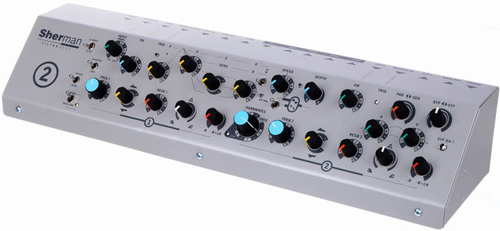
The Sherman Filterbank 2’s dual-filter configuration and tone are a key touchstone for developers designing filter plugins aimed at electronic and dance producers.
As with most other types of plugins, many filter plugins are partially modelled on some of the best or older, ‘classic’ hardware units. (This is something we touched on in our lists for the best reverb and compressor plugins.)
In the world of analogue filters, some of the key reference points are the filter sections from vintage analogue synths like the Moog Minimoog Model D and Korg MS-20, as well as more modern hardware units like the Mutron Mutator rack unit and tank-like Sherman FilterBank.

Ground-breaking 90’s studio secret weapon, the Mutronics Mutator filter rack unit.
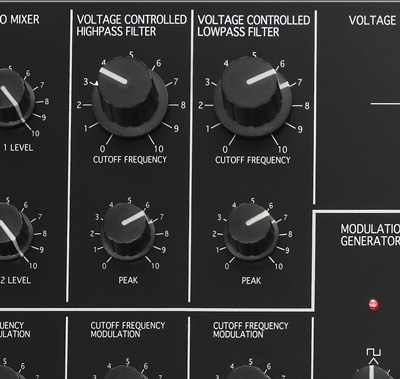
The Korg MS-20’s deceptively simple but very flexible dual high-pass and low-pass filter knob configuration , as well as the internal filter circuitry that contributed to the MS-20’s growling character, have proven influential.
With the advances in analogue circuit modelling we’ve seen in the last few years, most of users and developers attention has been on end-to-end recreations of complete analogue synths. But the success of a synth emulation often comes down to how accurately the synth’s filter module has been modelled – it’s usually this that gives a synth a large part of it’s sonic character (and why some synths end up being more highly prized than others).
With that in mind, it should come as no surprise that the average quality of standalone filter plugins has also dramatically increased in the last couple of years. There’s something newly exciting about being able to run digital-sounding wavetable and FM synths, for example, through truly analogue-sounding filters that provides both optimal flexibility and a truly modern digital-analogue-hybrid sound.

The Minimoog Model D filter section.
Filters: Two Minute Jargon-Buster
Before we get to the list, here are a few key terms explained for the uninitiated:
Low-Pass (LP): Filters work by removing – literally filtering out – selected frequencies. So a low-pass filter lets low frequencies through, filtering out the high frequencies. Where the filter stops filtering is determined by the Cutoff control: if the cutoff is set at 200Hz on a low-pass filter, everything above 200Hz will be removed; everything below will be unaffected.
High-Pass (HP): The inverse of a low-pass filter, it lets through – ‘passes’ – everything above the Cutoff.
Band-Pass (BP): Let’s through only a selected narrow range of frequencies, removing everything above and below.
Notch Filter: Also sometimes called Band Reject. The opposite of Band-Pass, it cuts out a user-defined range of frequencies. Sweeping a notch filter up and down the frequency spectrum can create some great effects for bringing additional movement to synth sounds etc.
Comb Filter: So-called because they consist of a series of regularly spaced frequency spikes (on a graph it looks like a hair comb), comb filters actually work by adding delayed versions of the source signal to itself, artifically creating sweepable ‘holes’ in the audio. (This actually recreates a natural acoustic phenomenon known as ‘standing waves’ that can be a real problem for acousticians, but used in a sound design context it can be very useful).
Multimode Filter: A filter that can operate using one of several different selectable filter types (as opposed to being in a “fixed” Low-Pass filter configuration, for example). A multimode filter has an extra control to select the type or “mode”, making it function typically either as a Low-Pass, High-Pass, Band-pass or Notch filter, as desired.
Resonance: Sometimes referred to as the Q setting, increasing the Resonance of a filter simply provides a boost at the Cutoff point. This may not sound that exciting, but it’s actually a key component of creative filtering techniques, and the particular character of a filters resonance controls is part of what makes some filter plugins a cut above the rest.
Poles: The number of poles refers to how steep the Cutoff Slope can be on a particular filter. The higher the number of poles, the steeper the Cutoff slope can be, which has the effect of a more extreme / precise distinction between the filtered and non-filtered frequencies. Generally, filter plugins are referred to as 2-Pole (filtering 12dB per octave) or 4-Pole (24dB).
The 10 Best Creative Filter Plugins – The List
Note: As ever, our numbering for each entry is more for navigational purposes than a rank order – it’s a way to divide the field into some broad and loose categories, so that we can put together a rounded selection to suit a variety of different filtering styles, workflows and budgets. For every entry we’ve also included a few related alternatives worth exploring – so if you particularly like or are already familiar with an entry, explore these for more similar options.
We recommend getting the demos or full versions (in some cases for free) from several of the links provided below, and comparing them yourself. Enjoy!
1. Arturia 3 Filters You’ll Actually Use – M12-Filter
Immaculate recreations of vintage synth filter sections, with added sequencing and modulation options.
What better way to kick things off than with a triple-set of plugins that have the chutzpah to state in their product name that you’re gonna put them to good use. And trust us, once you’ve tried them out, they won’t be lost in the shuffle at the back of your plugins folder. Being able to pepper a legendary analogue filter anywhere in your project, on any source material you like, is hugely useful – and a lot of fun.
The plugins are based on the filter sections of three vintage synths (which also happen to be some of the best analogue synth emulations in Arturia’s V Collection roster): The Moog MiniMoog along with Oberheim’s Matrix-12 and SEM synths (Arturia’s Mini V, Matrix-12 V and SEM V respectively).
There’s nothing old-fashioned about how these plugins have been realised though, and they’re not just “FX” versions of their parent synth plugins either: the analogue modelling provides a weight and grit that is perfect for modern electronic genres, and the smartly integrated additions of sequencers and modulation matrices that match the style of each source instrument are all excellent and thoroughly contemporary.
We’re singling out the M12-Filter for special mention in our list: while Mini-Filter and SEM-Filter are great and keep things raw-sounding and relatively stripped-down (in the best possible way), M12-Filter is all about those green draggable envelope generators in the middle that can be freely assigned to a host of parameters in the modulation matrix below. The two filters can also be routed in any of four ways, and combined with the Random rate and Modulation Oscillator knob controls, it’s a veritable sound designers playground.
To top it all off, the GUIs look fantastic and ooze inspiration – and importantly, they’re resizable too (something you wouldn’t think needed to be considered a “feature” in 2018, but it still is), so you can drool over the graphics and textures access the controls at whatever scale is most comfortable for the way you work and manage your screen real estate.
Available for: Mac/PC | 64 bit | VST2.4/VST3/AU/AAX/NKS
 Also check out: UAD also do a mean Moog with their Moog Multimode Filter XL (more on that below). Waves Metafilter offers no-nonsense filtering with warm analogue sound and a similar built-in analogue-style sequencer to match. It has a workhorse range and feature set that, to our minds, makes it a kind of unofficial fourth member of Waves’ Hybrid H-Series: “H-Filter”?
Also check out: UAD also do a mean Moog with their Moog Multimode Filter XL (more on that below). Waves Metafilter offers no-nonsense filtering with warm analogue sound and a similar built-in analogue-style sequencer to match. It has a workhorse range and feature set that, to our minds, makes it a kind of unofficial fourth member of Waves’ Hybrid H-Series: “H-Filter”?
If you pick up the Waves Mercury bundle that includes Metafilter, you’ll also get OneKnob Filter, which strips things right back to the raw essentials – a single knob allows you to seamlessly sweep through 10 different filter settings – perfect for performance, whether recording studio jams and automation passes, or live performance and DJing. (Included in the Waves OneKnob Series bundle, as well as the Diamond, Horizon and Mercury bundles.)
2. Cytomic The Drop
The benchmark modern filter plugin.
The Drop was ahead of the curve in many ways when it was first released a few years ago. Andy Simper of Cytomic produced such a definitive take on what a modern filter plugin could and should be, hitting the middle of the software developers’ proverbial Venn diagram balancing sound quality, fun/flexibility/ease of use, and processor performance, it quickly came to dominate the filter plugin landscape.
Using the Korg MS-20’s two different filter circuit revisions as a starting point and expertly modelling the specific filter components and design variants of several more vintage synths as well, The Drop takes inspiration judiciously from the past but doesn’t feel remotely “vintage” in operation. Despite the abundance of controls, there’s a leanness to both The Drop and Cytomic’s other major plugin, The Glue compressor (featured in our Best Compressor Plugins list), that provide everything you’d really want for most tasks but nothing extraneous; there’s no fat, everything is geared towards effective workflow – with a smile on your face while you do it.
In action, The Drop is like getting a turbo for your synth of choice. Don’t be intimidated by the vast array of knobs and buttons though if crazy modulation is not your thing: you can stick to using just the three large knobs for each of the high- and low-pass filters for incredibly fast and efficient, top-quality sound-sculpting. The animated blue wave Visualizer helps you keep tabs on exactly what’s happening, and the fully resizable GUI is a pleasure to use. A modern classic.
Available for: Mac/PC | 64 bit | VST2.4/AU/AAX
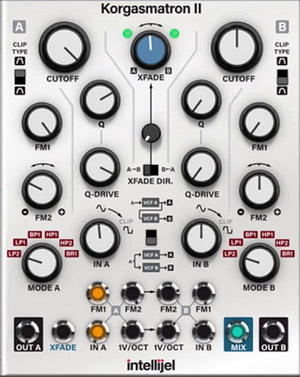 Also check out: For other explorations into MS-20 filter circuit-modelling, try Softube’s plugin version of Intellijel’s Korgasmatron. That’s right kids, we’re now in the era of of software recreations of favourite hardware that is itself based on / inspired by even more legendary other hardware. You will need Softube’s Modular plugin framework to run it, but the sound is spot-on. Also see Audio Damage FilterStation2 below. For streamlined variations on the dual-filter approach geared specifically to dance-production and DJing/live performance , try Vengeance Sound Philta XL and CableGuys FilterShaper 3 (more on that one below as well). If having a variety of specific modelled analogue filter types to scroll through is what’s important to you, another streamlined but high-quality filter is Tone2 BiFilter2 with its 47 different sounding filter types, and it’s much larger, feature-packed cousin FilterBank3.
Also check out: For other explorations into MS-20 filter circuit-modelling, try Softube’s plugin version of Intellijel’s Korgasmatron. That’s right kids, we’re now in the era of of software recreations of favourite hardware that is itself based on / inspired by even more legendary other hardware. You will need Softube’s Modular plugin framework to run it, but the sound is spot-on. Also see Audio Damage FilterStation2 below. For streamlined variations on the dual-filter approach geared specifically to dance-production and DJing/live performance , try Vengeance Sound Philta XL and CableGuys FilterShaper 3 (more on that one below as well). If having a variety of specific modelled analogue filter types to scroll through is what’s important to you, another streamlined but high-quality filter is Tone2 BiFilter2 with its 47 different sounding filter types, and it’s much larger, feature-packed cousin FilterBank3.
3. FabFilter Volcano 2
Deep and bubbling molten filtered goodness.
Flexibility, characterful analogue-style sound and an inspiring interface all come together in Volcano 2. It has four multimode filters that can be configured as low-, high- or band-pass; but on top of that, the filters can be linked so that you can control them together as one, making really complex-sounding effects very easy to manipulate and automate. The filters self-oscillate like rich analogue synth filters, meaning if you draw the resonant peaks of each filter up high enough on the display you can create an array of synth-style sound effects and textures, perfect for all electronic genres.
We particularly like the XLFO-led rhythmic and arpeggio presets that come with Volcano 2 – couple these with all the panning options (Volcano 2 includes an M/S switch so that as well as Left and Right, you could instead treat the Middle and Sides independently), and there are almost infinite possibilities for sonic exploration. This one goes deep.
Available for: Mac/PC | 64 bit | VST2.4/VST3/AU/AAX
BUY NOW via Plugin Boutique. Also check out: Ohm Force Quad Frohmage. Superficially very different, but it also has a four multimode filter core architecture for similarly out-there sonic explorations. The workflow is more knobby, and the four screens provide a different quality of visual feedback to Volcano, which all adds up to encouraging slightly different sonic results. Great attitude. (Quad Frohmage is four of the free Frohmage plugins strapped together in one interface – you can download Frohmage for free here.)
Also check out: Ohm Force Quad Frohmage. Superficially very different, but it also has a four multimode filter core architecture for similarly out-there sonic explorations. The workflow is more knobby, and the four screens provide a different quality of visual feedback to Volcano, which all adds up to encouraging slightly different sonic results. Great attitude. (Quad Frohmage is four of the free Frohmage plugins strapped together in one interface – you can download Frohmage for free here.)
FabFilter’s other effects plugins Saturn and Timeless 2 incorporate vast filter-modulation potential alongside distortion/saturation and delay respectively. There is also of course Pro-Q 2 – technically an EQ rather than a filter plugin per se, but with it’s fast and flexible draggable nodes, it’s clearly well suited to simple resonant sweeps and other creative filtering tasks too.
4. SoundToys FilterFreak2
Dark, classy and full of character.
Regarded as a Swiss Army knife filter favoured by professionals, FilterFreak is potentially the only analogue-style filter plugin you might need. Coming in two different variants, the FilterFreak package includes an efficient single-filter version for simpler tasks (see the top image above), whereas FilterFreak2 below it is the more flexible and feature-rich dual-filter version. The two filters can be run in parallel or series for a variety of effects.

Flexibility without ever sacrificing analogue tone and attitude is the paradigm here: Dual stereo, LP/HP/BP/BR, 2,4,6, or 8 pole, an LFO that can take on any shape imaginable, an envelope follower, multiple saturation modes, and endless opportunities for automating parameters. many of the extended features are available in a drop-down panel that can be easily hidden, so you won’t get bogged down in tweaking (unless you really want to).
Available for: Mac/PC | 64 bit | VST2.4/VST3/AU/AAX
Also check out: Softube’s Mutronics Mutator emulation is a more direct recreation of one of the classic hardware units that partially inspires the FilterFreak design and sound. Any of the Moog modelled filters from Arturia and UAD will also overlap to some extent with FilterFreaks sound and functionality. For something a little different in design while retaining the Mutron vibes, try PSP stompFilter.
5. Sugar Bytes WOW 2
Nicely streamlined filter delivering maximum options for expression and an impressively fat tone.
Sugar Bytes can always be relied on to bring something a little different to the table, and WOW 2 is no exception. This plugin is amazingly versatile, despite it’s relatively simple interface, and most importantly boasts an arsenal of 21 excellent and authentic-sounding analogue-styled filter types, including Comb and Band Reject configurations. WOW 2 also features extremely flexible modulation options for such a streamlined plugin (Envelope Follower, Step Sequencer and LFOs), and of course the Vowel Mode: this sets up a sort of formant filter that adjusts itself to the incoming signal to create filtered speech effects with plenty of movement.
Some other plugins would require a lot more setting up (or the addition of extra chains of plugins) to get similarly expressive sounds. The ease of use / quality of results ratio here is excellent, and for that gritty and growling modulated-filter sound that helped coin the sounds of Dubstep, EDM and modern Drum & Bass, but which is also suitable for many other modern electronic and pop styles, this could be exactly what you’re after.
Available for: Mac/PC | 64 bit | VST2.4/VST3/AU/AAX
BUY NOW via Plugin Boutique.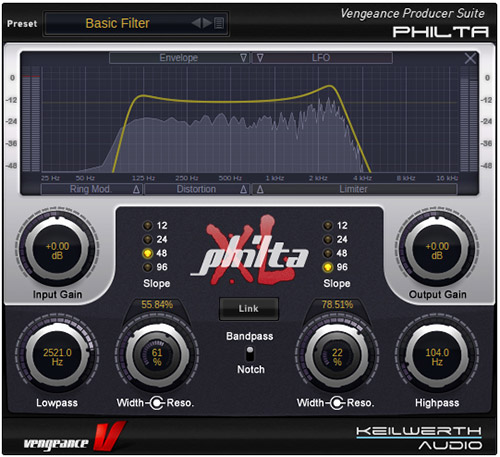 Also check out: If you’re after similarly immediate and high-quality modulation options, definitely try the rest of the Sugar Bytes range for some of the most inspiring and effective sound-mangling, sequencing and multi-effects plugins available. Our favourites are Effectrix, Thesys and Turnado.
Also check out: If you’re after similarly immediate and high-quality modulation options, definitely try the rest of the Sugar Bytes range for some of the most inspiring and effective sound-mangling, sequencing and multi-effects plugins available. Our favourites are Effectrix, Thesys and Turnado.
For other filter plugins aimed squarely at electronic producers, see Vengeance Sound Philta XL and Cableguys FilterShaper 3, immediately below.
6. Cableguys FilterShaper 3
Custom editable LFO shapes to separately modulate each filter parameter. And then modulate those modulators.
For adding movement and highly editable modulation to your sounds with speed and precision, FilterShaper 3 is definitely worth checking out. It’s a lot of fun plotting modulation points on the graphical editor to create different LFO shapes very quickly that can all interact to generate some extremely complex-sounding effects with relative ease: perfect for Massive-style rhythmic envelopes on Dubstep basses and such-like. Not as analogue-sounding as some of the other filters here, FilterShaper is perhaps more about the clean and sharp filter envelopes than being used as an overall tone colouring tool, making it a very useful addition to every modern producers plugin toolset (it’s easy enough to combine with a bit of additional distortion or saturation from elsewhere in the signal chain should you want to).
Available for: Mac/PC | 64 bit | VST2.4/VST3/AU/AAX
BUY NOW via Plugin Boutique. Also check out: For something similarly streamlined for modern dance production but with a touch more warmth and analogue bite, try Vengeance Sound Philta XL or Sugar Bytes WOW 2. And for a simple free filter plugin that uses a similar splines and nodes system for shaping the modulation, try TAL-Filter-II.
Also check out: For something similarly streamlined for modern dance production but with a touch more warmth and analogue bite, try Vengeance Sound Philta XL or Sugar Bytes WOW 2. And for a simple free filter plugin that uses a similar splines and nodes system for shaping the modulation, try TAL-Filter-II.
7. u-he Filterscape
Create eight different filter/EQ landscapes, and then morph between them at will.
Lots of great modulation and routing options here, but perhaps the standout feature of Filterscape for us is the ability to take eight “snapshots” of the EQ settings you’ve dialled in, and then morph seamlessly between them by turning the wheel selector in the centre of the GUI. The wheel control can, naturally, also be automated and/or modulated itself by the LFOs. In fact, almost everything can be morphed, modulated and manipulated by the LFOs, envelopes and arpeggiator for some truly spacey effects.
Filterscape is a must-have for u-he devotees, particularly owners of Zebra 2 who will feel right at home with the GUI styling and will be comfortable with the fairly open-ended range and workflow; and Diva fans, who can feed those simple and rich analogue oscillator tones into Filterscape for extra mind-blowing depth and intricacy that is usually the domain of semi-modulars like Zebra 2 and Bazille.
Bundled with the Filterscape plugin, you also get FilterscapeVA, a complete virtual analogue synth instrument whose oscillators can each be treated with their own morphing EQ settings for patches full of movement and expression; and FilterscapeQ6, a dynamic 6-band EQ plugin based around a single morphing EQ instance but with additional low and high shelving filters.
There’s a nice roll-over explanation of the features and more info here.
Available for: Mac/PC | 64 bit | VST2.4/VST3/AU/AAX
BUY NOW via u-he.com. Also check out: Continuing the theme of building your own complex processing chains and exploring custom semi-modular effects routings (and saving your favourite custom preset chains) all within a single plugin interface, we’d also highly recommend PSP’s N2O. With N2O you set up the features of each effect/module, and then build a custom routing structure with the main modulation matrix in the centre display (this reminds us a lot of the FM synthesis routing style, as found in FM8 and the Yamaha DX7 synths, for example). If all that sounds like hard work you can of course use any of the 192 very cool presets for a huge range of ready-made filter-mod effects.
Also check out: Continuing the theme of building your own complex processing chains and exploring custom semi-modular effects routings (and saving your favourite custom preset chains) all within a single plugin interface, we’d also highly recommend PSP’s N2O. With N2O you set up the features of each effect/module, and then build a custom routing structure with the main modulation matrix in the centre display (this reminds us a lot of the FM synthesis routing style, as found in FM8 and the Yamaha DX7 synths, for example). If all that sounds like hard work you can of course use any of the 192 very cool presets for a huge range of ready-made filter-mod effects.
 For even more in that vein, see Eventide’s excellent H3000 Factory. For sound designers going deep with their modulation, MeldaProduction MFilter provides a similar degree of media post-production studio-grade fine control over your filtering, wrapped in a clean and super-modern graphic GUI that belies it’s power, until you look more closely…
For even more in that vein, see Eventide’s excellent H3000 Factory. For sound designers going deep with their modulation, MeldaProduction MFilter provides a similar degree of media post-production studio-grade fine control over your filtering, wrapped in a clean and super-modern graphic GUI that belies it’s power, until you look more closely…
8. Audio Damage FilterStation2
FilterStation: Redux. The old favourite rewritten, with 12 different filter algorithms and 12 LFO shapes.
As succinctly stated on their site, “Filterstation is the Audio Damage take on the classic serial/parallel/stereo dual filter topology, made famous (and some would say “indispensable”) by the Sherman Filterbank and its many clones.” Including an MS-20 emulation and versions of their Filterbank-inspired 914 band-pass and Filterpod low-pass filters amongst the twelve available algorithms, FilterStation2 packs a punch.
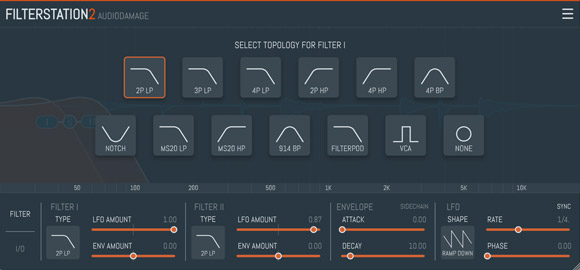
In typical Audio Damage fashion, in use this feels like quite a different beast from the Drops, FilterFreaks and Volcanos – despite sharing some of those plugins inspirations and features, FilterStation2 has a certain attitude and character that is all it’s own, right down to the futuristic vector GUI, that’s ideally geared towards techno and any forward-thinking electronic production.
Available for: Mac/PC | 64 bit | VST2.4/VST3/AU/AAX
BUY NOW via Audio Damage.9.Kuassa EFEKTOR WF3607 Wah Filter
Well-modelled classic guitar effects in a standalone plugin format.
We couldn’t provide a comprehensive guide to filter plugins without touching on “wah”. A staple filter effect in the world of guitar effects pedals, (and classic keyboard playing a la Stevie Wonder), wah is created by sweeping a filters resonant peak up and down the frequency range, usually using a foot pedal to control the amount and speed of the sweep to create rhythmic, vowel-like modulations. Some key hardware touchstones for modelling here are the Dunlop Crybaby and Mutron III pedals.
There’s a lot to be said for the immediacy provided by simple plugins and tools that do one thing well. Given that, it’s currently surprisingly difficult to find quality standalone guitar effects plugins that are not part of one of the major guitar amp simulator plugin ranges. We’ve chosen Kuassa’s EFEKTOR WF3607 Wah Filter plugin as it draws on those iconic wah reference points with elegance, and with 8x oversampling, a professional-grade modelled sound.
Available for: Mac/PC | 32/64 bit | VST2.4/VST3/AU/AAX
BUY NOW via Plugin Boutique. Also check out: Even if you’re making styles of music that don’t require guitars, plugins like Native Instruments Guitar Rig 5, Waves GTR Stomps and Amplitube can be a great source of great secret weapon modulation effects chains with their arrays of rack effect and stomp box emulations. See The Best Guitar Amp Plugins for much more on the best choices.
Also check out: Even if you’re making styles of music that don’t require guitars, plugins like Native Instruments Guitar Rig 5, Waves GTR Stomps and Amplitube can be a great source of great secret weapon modulation effects chains with their arrays of rack effect and stomp box emulations. See The Best Guitar Amp Plugins for much more on the best choices.
Another option that’s not an obvious choice for a filters list at first glance is iZotope Trash 2: as we touched on in the intro, filtering and distortion/saturation are a natural pairing that we see combined in many of the best plugin processors.
 With Trash2, you have what is probably the most comprehensively flexible and controllable implementation of distortion available in any plugin processor, and of course it features two filter sections to help tame and target your sound-shaping (and sound-destroying) with absolute precision.
With Trash2, you have what is probably the most comprehensively flexible and controllable implementation of distortion available in any plugin processor, and of course it features two filter sections to help tame and target your sound-shaping (and sound-destroying) with absolute precision.
Melda MFilter does good wah, with a clean but very deep “studio” interface with far more editable parameters but not as much immediacy; also as mentioned earlier, PSP stompFilter for the Mutron vibes.
10. Universal Audio Moog Multimode Filter XL
State-of-the-art Moog filter emulation with assignable modulation lanes.
Coming full circle, we’ll close out the list with possibly the finest Moog filter recreation in software. This one runs on the DSP-powered UAD hardware interfaces like the Apollo Twin series, so it has an immediate advantage in raw processing power over any of the native plugins on our list, in terms of recreating the Moog filter with ultimate analogue authenticity.

If Universal Audio had stopped at a simple 1-to-1 recreation of the filter and it’s basic controls, that would have been enough to please many. But the Filter XL also has fantastic and novel modulation capabilities, with four graphic lanes in a second Sequencer window that can be freely assigned to the parameters of your choosing. It’s a neat enhancement that feels in keeping with the vintage style of it’s key inspiration, and yet smoothly cutting-edge at the same time. One of the best UAD plugins, bar none.
Available for: Mac/PC | 64 bit | UAD Powered Plugin/AAX
BUY NOW via Universal Audio.
Also check out: If you like your creamy analogue filtering with a side of crunchy 8-bit distortion effects, the Softube’s plugin recreation of the OTO Biscuit hardware unit may be more for you. It’s ostensibly a modern digital distortion unit, but it also incorporates one of the best and smoothest filters yet created in the plugin domain. Developed by Softube, it’s available in native plugin formats as well as the UAD system. This one is more for electronic producers than most of the UAD plugin range (which tends to skew towards rock and pop production tools), so it’s a must-have if you’re more in the electronic camp and own a UAD Apollo interface.

In terms of native Moog filter plugins, we think Arturia’s Mini-Filter now rules the roost. Another option is to use Synapse Audio’s excellent Minimoog Model D synth emulation The Legend as an insert effect, thus providing a sneaky virtual way of processing external audio through the synth’s “on-board” filter just as you can with the real hardware.
So there are our top picks for the best filter plugins available right now. As ever, leave a comment below if you find this useful, and also let us know which plugin filters are your personal go-to’s!
For a definitive collection of tips and techniques for enhancing your music to a professional level – from advanced compression techniques to shaping and placing your sounds in the mix with correctly applied reverb and fine-tuned EQ adjustments – don’t forget to check out the Ultimate Guides series:
If you liked this post, you’ll definitely find these useful too:
5 Of The Best Guitar Amp Sim Plugins And How To Get Great Tone With Them
16 Of The Best Saturation Plugins In The World
10 Ways To Make Your Soft Synths Sound More Analogue
25 Of The Best Drum Plugins In The World
50 Of The Best Compressor Plugins In The World



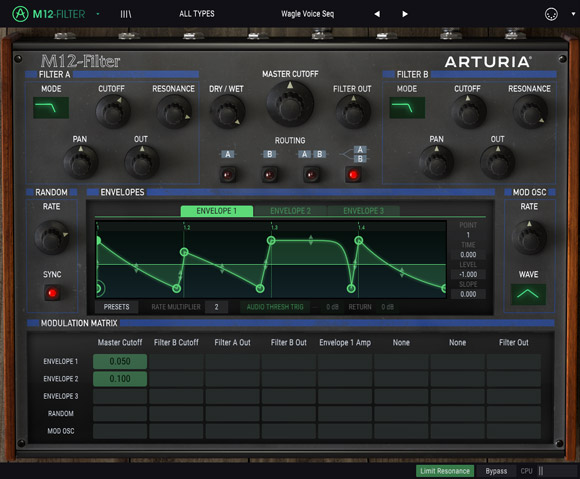



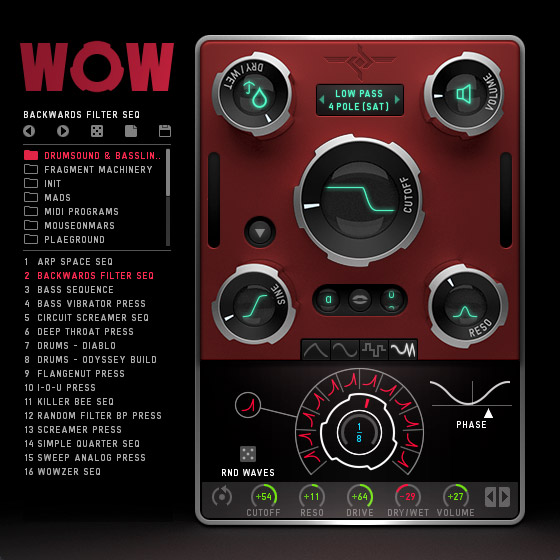









10 Comments
Your missing out one of the best sounding analog filters out there,
Cytomic the Drop !
It is absolutely mad what you can do with the drop. I think it definitely should make your list.
Another good contender is the MS-20 Legacy in FX mode, since you can use it as a creative filter. It’s 50$ and actually can do quite a bunch of great things to the audio.
Thanks Aj, I agree The Drop should not be forgotten!
You mentioning the MS-20 Legacy as an insert effect also reminds me of another cool tip: you can use the Moog-style filter section on the GForce Minimonsta VSTi in a similar way.
Cheers!
The drop by cytomic the best filter at the moment
Filterfreak and Volcano can be emulated in most daws. Hence, Live 9 and Max for Live blow Volcano and Filter freak away. It’s all about learing the inside of your daw. I’m not trying to insult anyone. But use what you have and learn it. Before you out our buying more stuff than you need.
Yes, i dare you to emulate fab filter volcano with live…. There are resons why it is used everywhere. Its simple, presets are awesome, it is hard to emulate with other plugins and it gives you inspiration.
The writer GEORGEGTPS gives us all the third party plugins. If he can introduce the tools inside the DAW software bundles such a Cubase, Logic, Ableton, FL Studio, etc…… , that would be best for the people who just want to apply the 10 Principles of the number 10: Use Available Tools To Their Full Potential
Failing to include The Drop makes me question all evaluation and reviews.
Hey, you’re right to flag that up – I’ll obviously be including Cytomics The Drop in the next proper update. Cheers!
I also miss the Xfer LFOTool. It has loads of filter types and the modulation possibilities make it great for electronic music. Maybe it is because of the name. If it was called Modfilter or something …
thank you for the list